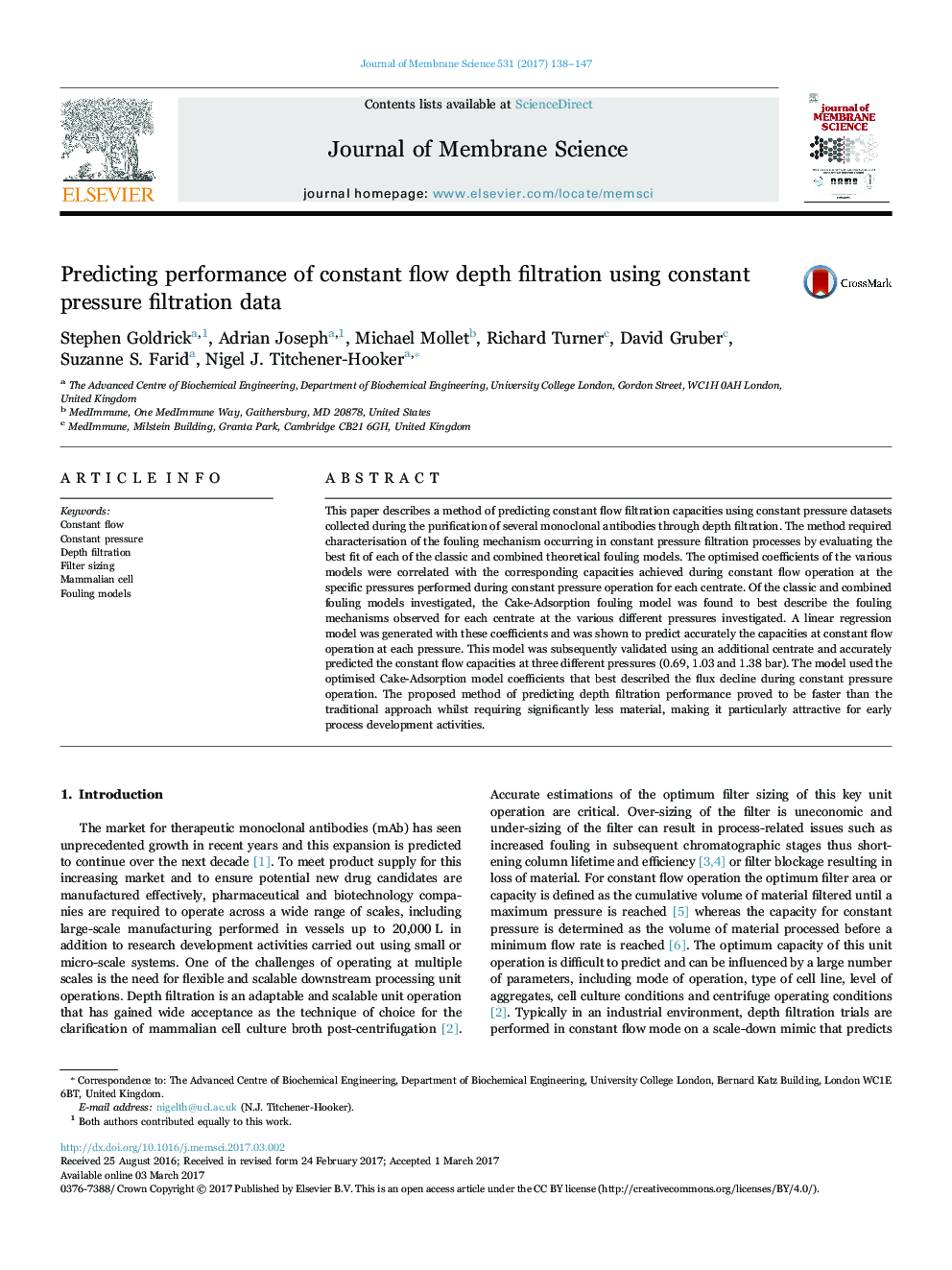| Article ID | Journal | Published Year | Pages | File Type |
|---|---|---|---|---|
| 4988733 | Journal of Membrane Science | 2017 | 10 Pages |
â¢Identifies best classic and combined fouling models describing depth filtration.â¢Utilization of calculated fouling coefficients to build a predictive model.â¢Utilization of constant pressure flux decline data to predict constant flow capacity.â¢Proposed method reduces material and time requirements for filter sizing studies.â¢Method validated for centrates processed at different scales across multiple products.
This paper describes a method of predicting constant flow filtration capacities using constant pressure datasets collected during the purification of several monoclonal antibodies through depth filtration. The method required characterisation of the fouling mechanism occurring in constant pressure filtration processes by evaluating the best fit of each of the classic and combined theoretical fouling models. The optimised coefficients of the various models were correlated with the corresponding capacities achieved during constant flow operation at the specific pressures performed during constant pressure operation for each centrate. Of the classic and combined fouling models investigated, the Cake-Adsorption fouling model was found to best describe the fouling mechanisms observed for each centrate at the various different pressures investigated. A linear regression model was generated with these coefficients and was shown to predict accurately the capacities at constant flow operation at each pressure. This model was subsequently validated using an additional centrate and accurately predicted the constant flow capacities at three different pressures (0.69, 1.03 and 1.38Â bar). The model used the optimised Cake-Adsorption model coefficients that best described the flux decline during constant pressure operation. The proposed method of predicting depth filtration performance proved to be faster than the traditional approach whilst requiring significantly less material, making it particularly attractive for early process development activities.
Graphical abstractDownload high-res image (312KB)Download full-size image
